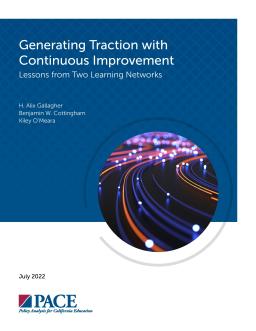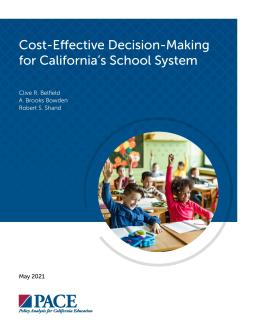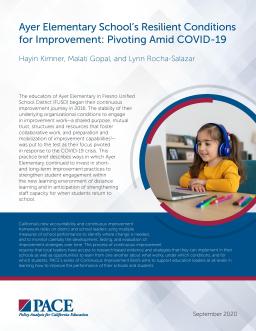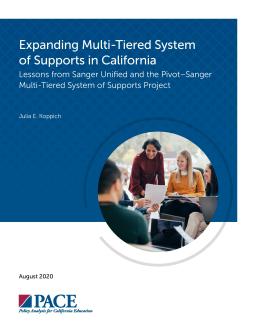How School Districts Craft Coherence Towards Continuous Improvement
Published
Summary
This study uses qualitative case study methods to explore how educators establish system-wide continuous improvement capabilities and coherence for implementation, taking into consideration the local contexts. Educators use two bridging approaches to crafting coherence: weaving and stacking. The study contributes to understanding how leaders create shared meaning and practice in complex and dynamic educational systems. The implications for both research and practice are discussed.
Lessons from Two Learning Networks
Published
Summary
This report examines how continuous improvement is applied to educational accountability in California. It analyzes the experiences of two organizations leading networks to increase postsecondary success, aiming to improve the consistency of initiatives using continuous improvement. Key takeaways for districts, county offices, and support providers are provided.
A Case Study of Two High-Poverty School Districts
Published
Summary
A report examines two CA districts that have shifted their structures, policies, and culture to improve student outcomes. Both districts worked with California Education Partners to refine their continuous improvement approach and spread practices. PACE identified three key lessons for leading impactful improvement efforts: anchor work in outcome measures, invest in an aligned system of instructional learning, and use cross-role and cross-site structures. These lessons contributed to positive trends for student achievement, empowered practitioners, and built internal capacity for improvement.
Published
Summary
A report on the importance of economic analysis in decision-making in CA's school system. Economic evaluations can help identify the most effective policies and interventions while reducing waste and ultimately improving outcomes for students. Studied here is the cost-effectiveness analysis (CEA) method, its benefits, and its broad applicability. To be more influential, economic analysts should focus on policies and programs that require significant funding, investigate how results are relevant to decision-makers, and consider how resources can be allocated towards cost-effective programs.
Pivoting Amid COVID-19
Published
Summary
This brief outlines Ayer Elementary's journey of continuous improvement since 2016 and how their organizational conditions were tested during the COVID-19 crisis. Despite the challenges, the school invested in improvement practices to strengthen student engagement in distance learning and build staff capacity for when students return to school.
Sanger Unified and the Pivot–Sanger Multi-Tiered System of Supports Project
Published
Summary
Equity has been a key focus of California education policies, which aim to reduce disparities in learning outcomes. The Multi-Tiered System of Supports (MTSS) can help identify struggling students and offer support. Pivot Learning's demonstration project with Sanger, Monterey Peninsula, and Lancaster school districts sought to make MTSS implementation more accessible. Lessons learned from Sanger's implementation can guide the state's continued expansion of MTSS.





